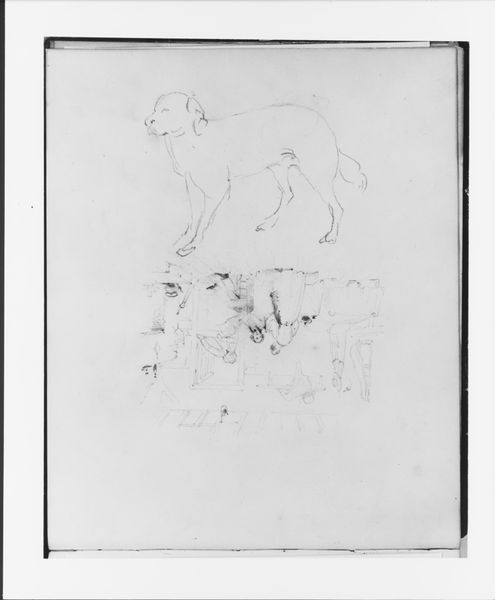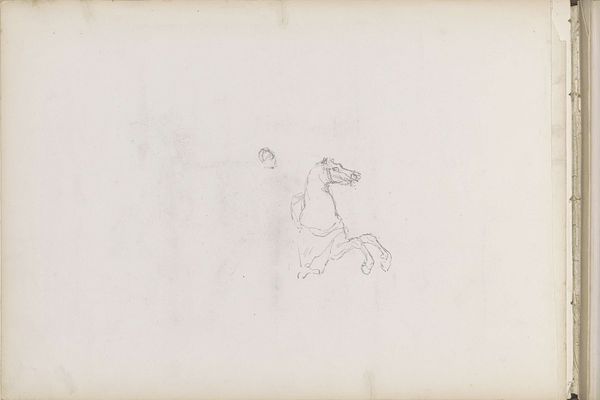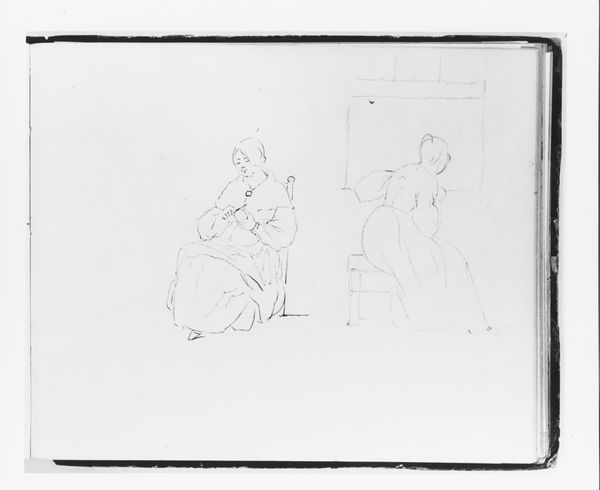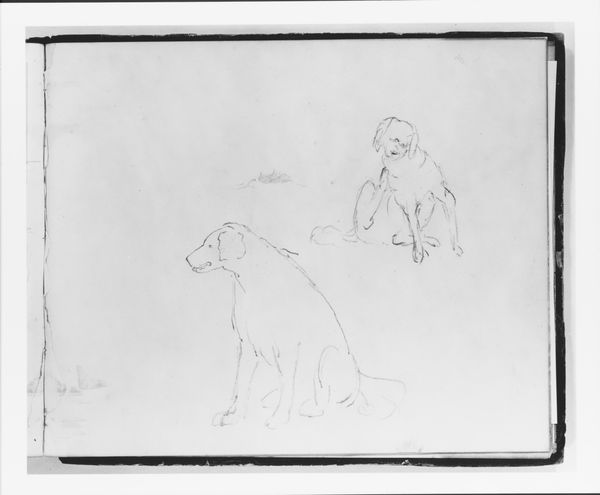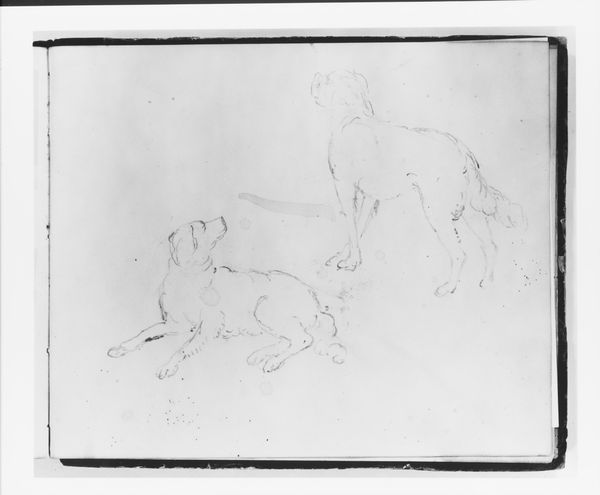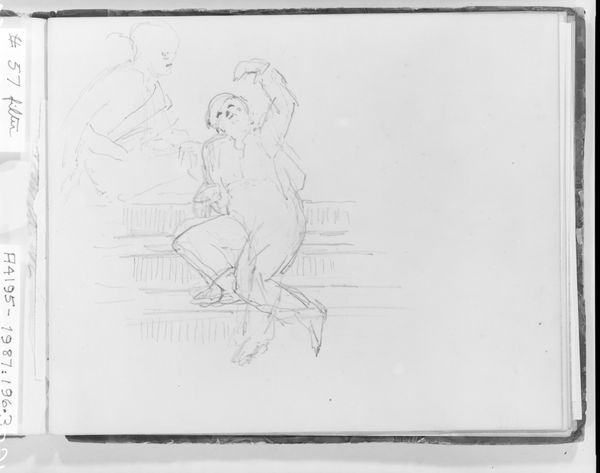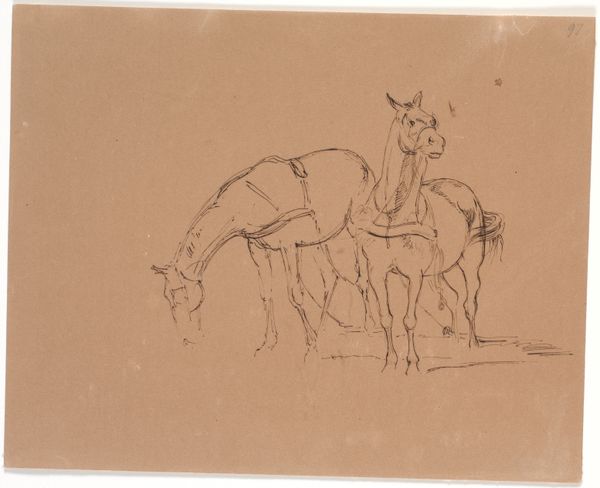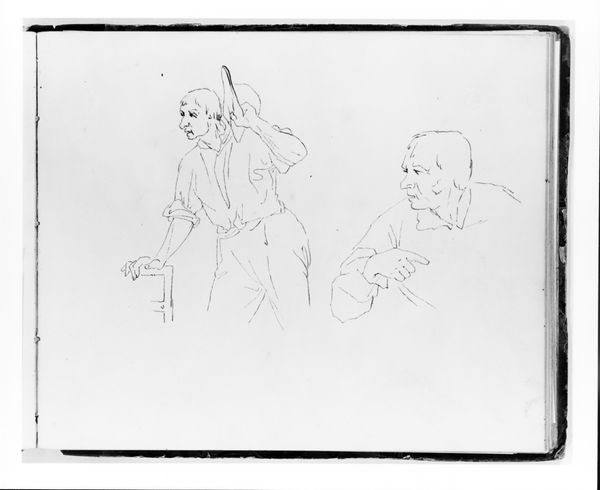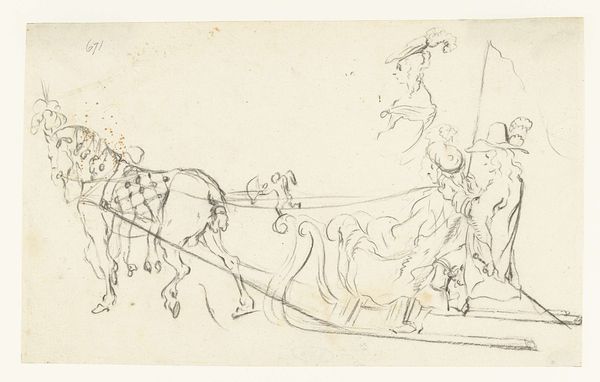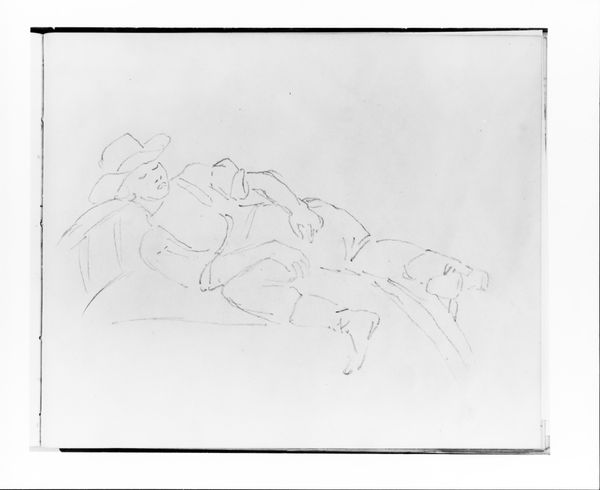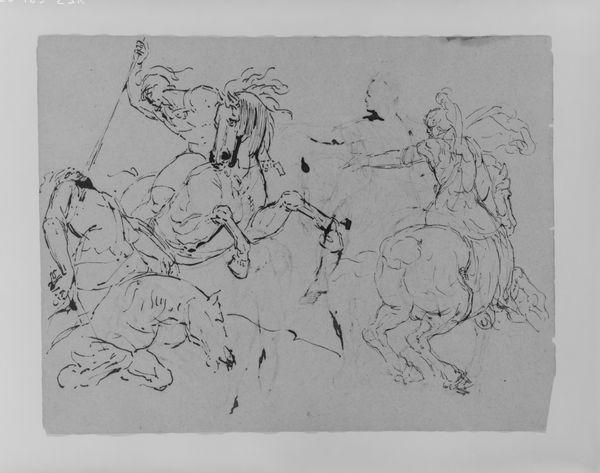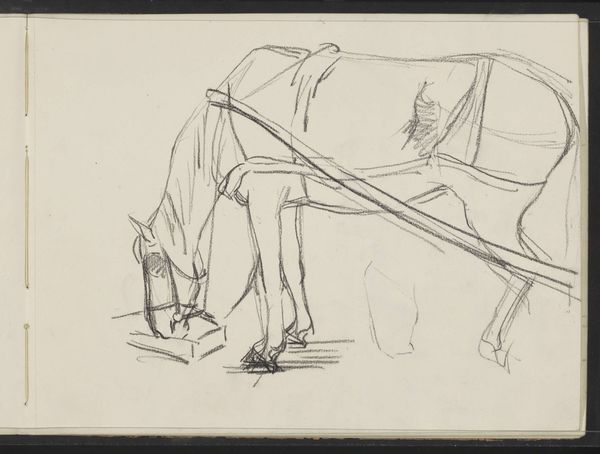
Baby with a Toy Horse (from Sketchbook) 1835 - 1839
0:00
0:00
drawing, paper, pencil
#
portrait
#
drawing
#
paper
#
child
#
romanticism
#
pencil
#
horse
#
portrait drawing
#
genre-painting
Dimensions: 6 5/8 x 8 in. (16.8 x 20.3 cm)
Copyright: Public Domain
Curator: This is Francis William Edmonds' pencil drawing, "Baby with a Toy Horse," created sometime between 1835 and 1839. It's currently held at the Metropolitan Museum of Art. Editor: My initial thought is simplicity. There’s a wonderful delicacy in the lines, a rawness to the visible marks on paper. It’s direct. Curator: The drawing offers insight into the Romantic era's fascination with childhood innocence. Genre paintings like these gained popularity, reflecting societal values concerning domestic life. Notice the context. This isn’t a formal portrait but a candid, almost accidental, glimpse into a child’s world. Editor: Absolutely, and focusing on the materials highlights that unpretentious intimacy. It’s pencil on paper, after all – accessible materials, indicative of the period’s burgeoning middle class with time and resources for sketches. We see here the nascent consumerism reflected in toys and simple pleasures captured in commonplace media. Curator: I think Edmonds uses the relative informality of drawing to soften societal expectations surrounding class and gender. Rather than showcasing the child as an emblem of prosperity or lineage, the artist draws them absorbed in a simple act of play. Editor: It also captures a fascinating interplay between labor and leisure, even in childhood. The wooden horse, a crafted object on wheels, now a plaything. We tend to romanticize that history and overlook all the material work required for these objects, not to mention paper and pencil in the early 19th century. Curator: Yet, I see a powerful social narrative within those choices of medium. The artist's access to the paper reflects shifts in the art world towards a broader audience, where private appreciation becomes increasingly important. Editor: True. This single-page illustration gives pause to reflect on the artist, time, medium and the world of child's play. Curator: It definitely provides a quiet space to contemplate societal shifts in nineteenth-century America.
Comments
No comments
Be the first to comment and join the conversation on the ultimate creative platform.
